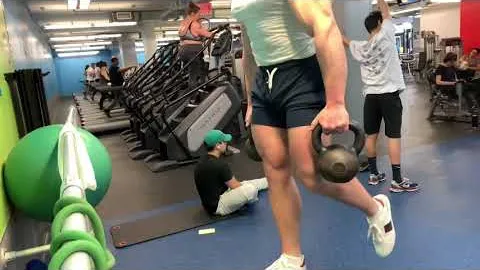

Physical fitness is an essential component of maintaining a healthy lifestyle. One exercise that can greatly contribute to overall strength and balance is the Single Leg Step-Up. This exercise primarily targets the lower body, specifically the glutes, quadriceps, and hamstrings. It also engages the core muscles to improve stability and coordination.
The Single Leg Step-Up exercise can be incorporated into any lower body or full-body workout routine. Here are a few ideas to help you get started:
Strength Training: Perform 2 to 3 sets of 10 to 12 repetitions of Single Leg Step-Ups on each leg, alternating between legs for each set. Combine this exercise with other lower body exercises such as squats, lunges, or deadlifts to create a comprehensive lower body strength training session.
HIIT (High-Intensity Interval Training): Include the Single Leg Step-Up exercise in a circuit-style workout. Perform 30 seconds of Single Leg Step-Ups on each leg, followed by 30 seconds of another cardiovascular exercise such as jumping jacks or mountain climbers. Repeat the circuit for 10 to 15 minutes to elevate your heart rate and challenge your muscles.
Recovery or Injury Prevention: The Single Leg Step-Up can also be used as a rehabilitative exercise to strengthen specific muscle groups and improve balance after an injury. Start with a lower platform height and gradually increase as strength and stability improve.
Incorporating the Single Leg Step-Up exercise into your fitness routine can yield numerous benefits, including improved leg strength, balance, stability, and overall functional movement. Remember to start with proper form and gradually progress in difficulty as your strength and technique improve. By consistently incorporating this exercise into your workouts, you can work towards achieving a stronger, more balanced lower body.
If you're looking for a gym, fitness club or yoga studio, you've come to the right place.
You can find information about gyms in your area. Browse catalog of gyms and find gyms with classes which are you looking for.
On gym page you can find simple information like address, phone or website. You can find list of available classes. You can check availability of personal training or small group classes. On place page you can also see information about open hours.
You can find gyms near you with amenities, courts, studios and equipments.
Use our map to find gym at your city or district.
In Gym Navigator you can find list of exercises with movies for many body parts.
You can browse exercises catalog and find exercises the best of you.
You can also find exercises grouped into workout plans, which you can use to improve you body. Each routine show you exercises one by one and give you possibility to count you progress and count down rest time.